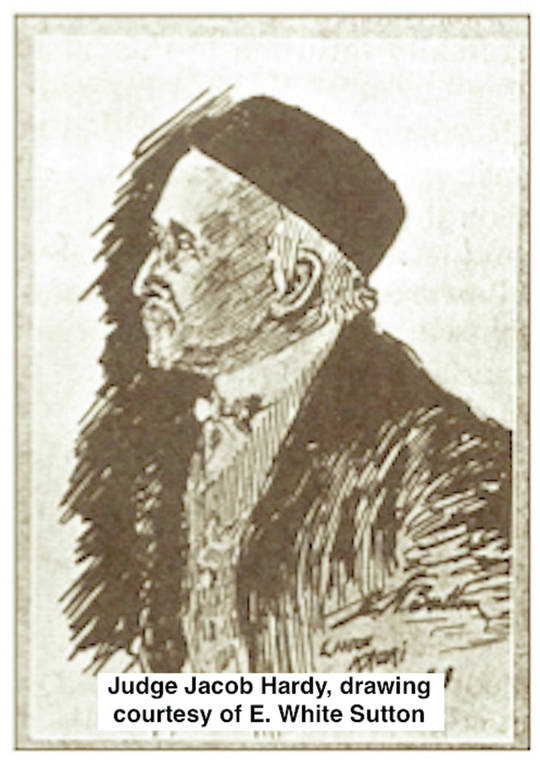Jacob Hardy, for whom Hardy Street in downtown Lihu‘e is named, was born at Peabody, Massachusetts, in 1827, of English immigrant parents, and after graduating from Amherst College in 1849, he sailed to Hawai‘i on the advice of a physician who’d suggested a warmer climate would improve his poor health.
At first he tried his hand at sugar-planting on Maui, but soon entered government service as a clerk in Honolulu, a post he held until 1854, when he was appointed circuit court judge of Kaua‘i.
On Kaua‘i, he and his wife, Mrs. Elizabeth Hardy, made their home in a thatched house he’d purchased from Judge E.P. Bond on four acres of land at Malumalu, situated south of Puhi above Hule‘ia Stream, about 300 yards or so east of where the Puhi and Hulemalu roads intersect, an area also known as Grove Farm Field #10.
His neighbors at Malumalu were Judge Bond and Mrs. Bond, naval officer William Reynolds and Mrs. Reynolds, and James Marshall, the first manager of Lihu‘e Plantation and Mrs. Marshall, while several hundred Hawaiians occupied thatched houses in the vicinity.
These four couples formed a community at Malumalu patterned after the Brook Farm Colony, a short-lived (1841-1847) utopian experiment in communal living in Massachusetts founded by novelist Nathaniel Hawthorne.
Hardy resigned from the circuit bench in 1863, sold his Malumalu property, and moved to California, where he became the secretary of a copper mine at Copperopolis for a couple of years and, later, a businessman in San Francisco, before returning to Kaua‘i in 1877 to resume his old place on the circuit bench, a position he would hold for 35 years.
Judge Hardy was also known as the unofficial poet laureate of Kaua‘i, and often wrote poems marking public occasions.
When he died on Aug. 8, 1915, his services were held at the Lihu‘e Union Church, the Rev. John Mortimer Lydgate officiating.
Many people from all over Kaua‘i attended, his pallbearers bore noted surnames in the history of Kaua‘i: Coney, Robinson, Purvis, Wishard, Rice, Wilcox, Dole, Waterhouse, Farley and Isenberg, and he was interred at Lihu‘e Cemetery.
•••
Hank Soboleski has been a resident of Kauai since the 1960s. Hank’s love of the island and its history has inspired him, in conjunction with The Garden Island Newspaper, to share the island’s history weekly. The collection of these articles can be found here: https://bit.ly/2IfbxL9 and here https://bit.ly/2STw9gi Hank can be reached at hssgms@gmail.com



The artist EWhite Sutton was my grandfather and a lawyer and artist in Honolulu.
Where is this drawing displayed?
I am a lawyer in Honolulu and our family has a cabin in Kokee.
Richard Sutton Jr
Richard, The drawing was taken from the book “Koamalu” by Ethel Damon. Hank